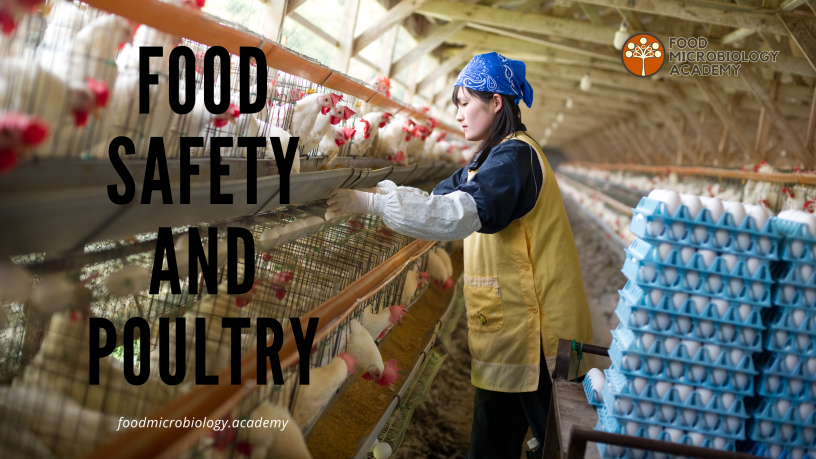Introduction
Poultry production is a cornerstone of the global food industry, providing a significant portion of the world’s protein needs. As the demand for poultry products continues to rise, ensuring the safety and hygiene of these products becomes paramount. Poultry production facilities must adhere to strict food safety and hygiene practices to protect consumers from foodborne illnesses and maintain the integrity of the industry. This essay explores the importance of food safety and hygiene practices in poultry production facilities, discussing the risks associated with neglecting these practices and the measures that can be taken to ensure the safety of poultry products.
I. The Significance of Poultry Production
Poultry, including chickens, turkeys, ducks, and geese, are a major source of animal protein for billions of people worldwide. It is considered an important component of a balanced diet due to its high protein content and relatively low cost compared to other sources of animal protein. Poultry products, such as chicken meat and eggs, are versatile ingredients used in a wide range of culinary applications.
II. Food Safety in Poultry Production
A. Microbial Contamination
- Pathogenic Bacteria: Poultry production facilities are susceptible to contamination by pathogenic bacteria, such as Salmonella and Campylobacter. These bacteria can cause serious foodborne illnesses when poultry products are not handled or cooked properly.
- Cross-Contamination: Cross-contamination occurs when pathogens from raw poultry come into contact with other foods or surfaces in the production facility, leading to the spread of bacteria and increased risk of infection.
B. Chemical Contaminants
- Antibiotics and Growth Promoters: The misuse of antibiotics and growth promoters in poultry production can result in residues in poultry products, posing health risks to consumers and contributing to antibiotic resistance.
- Pesticides and Chemical Additives: Chemical contaminants can enter the food supply chain through contaminated feed or water sources, affecting the safety of poultry products.
III. Hygiene Practices in Poultry Production
A. Facility Design and Layout
- Segregation: Separation of different production areas (e.g., hatcheries, broiler houses, and processing plants) is essential to prevent cross-contamination.
- Sanitary Equipment: The use of easy-to-clean and disinfect equipment reduces the risk of bacterial buildup and contamination.
B. Personnel Training and Hygiene
- Handwashing and Sanitisation: Strict handwashing protocols and the use of hand sanitisers are crucial to prevent the transfer of pathogens from workers to poultry products.
- Protective Clothing: Employees should wear appropriate protective clothing, including gloves, hairnets, and smocks, to minimise the introduction of contaminants.
C. Cleaning and Sanitation
- Regular Cleaning: Frequent cleaning of production areas, equipment, and utensils is essential to remove dirt and pathogens.
- Disinfection: The use of effective disinfectants helps eliminate harmful microorganisms from surfaces.
D. Pest Control
- Rodent and Insect Management: Implementing measures to control rodents and insects in poultry facilities is crucial to prevent contamination.
- Proper Waste Management: Adequate disposal of poultry waste reduces the attraction of pests and minimises the risk of contamination.
IV. Regulatory Framework
A. Food Safety Regulations
- Global Standards: Organisations like the World Health Organization (WHO) and the Food and Agriculture Organization (FAO) establish global guidelines for food safety, including those specific to poultry production.
- National Regulations: Each country has its own food safety regulations and agencies responsible for monitoring and enforcing compliance in poultry production.
B. Auditing and Certification
- Third-Party Audits: Many poultry production facilities undergo regular audits by independent third-party organisations to ensure compliance with food safety standards.
- Certification Programs: Certification programs, such as Hazard Analysis and Critical Control Points (HACCP), provide a structured approach to identifying and controlling food safety hazards in poultry production.
V. Consumer Confidence and Industry Reputation
A. Consumer Trust
- Public Awareness: Consumer awareness of food safety issues has increased, making it imperative for poultry producers to maintain high standards.
- Brand Reputation: Companies that prioritise food safety and hygiene practices can build and maintain a positive brand reputation, which is crucial for market success.
B. Market Access
- International Trade: Meeting stringent food safety requirements is essential for poultry producers seeking to access international markets and comply with import regulations.
- Economic Viability: Ensuring the safety of poultry products sustains the economic viability of the industry by preventing product recalls, legal liabilities, and loss of market share.
VI. Challenges and Future Trends
A. Antibiotic Resistance
- Responsible Use: The poultry industry faces the challenge of reducing antibiotic use while maintaining animal health and food safety.
- Alternative Strategies: Research into alternative strategies for disease prevention and growth promotion is ongoing, including probiotics and vaccines.
B. Sustainability
- Environmental Impact: Poultry production can have a significant environmental footprint. Sustainable practices aim to reduce resource consumption and waste generation.
- Organic and Free-Range Production: Consumer demand for organic and free-range poultry products has led to an increased focus on animal welfare and natural production methods.
VII. Conclusion
Food safety and hygiene practices are of paramount importance in poultry production facilities. Neglecting these practices can lead to microbial and chemical contamination, posing serious health risks to consumers and damaging the reputation of the industry. Adherence to rigorous hygiene standards, facility design, personnel training, and regulatory compliance are essential to ensuring the safety of poultry products. As the global demand for poultry continues to rise, the industry must prioritise food safety to protect public health and maintain its economic viability. By embracing responsible practices and adapting to evolving challenges, the poultry industry can secure its role as a reliable source of safe and nutritious protein for the world’s population.

